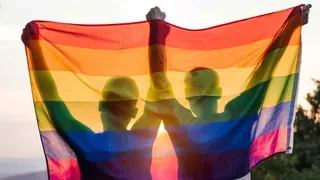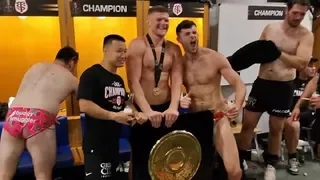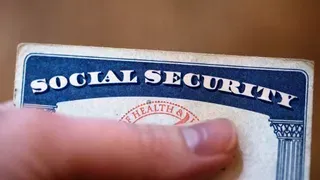July 20, 2013
Save Our Sons: GMHC Warns of Cuts to MSM Programs
Winnie McCroy READ TIME: 7 MIN.
Spurred by deep federal funding cuts to HIV prevention programs, on July 10, the Gay Men's Health Crisis gathered the experts in the field for a panel titled "S.O.S. (Save Our Sons): A community discussion on the rising rates of HIV infection among young gay men of color while prevention funding is shrinking."
"Make no mistake about it; we called this panel S.O.S. because we need to be sending up flares and signals to everybody who will listen that this is a population that must be supported," said GMHC's COO Janet Weinberg.
Guest panelists at the event included GMHC's Community Health and Research associate Dominique Crisden; NYC Department of Health & Mental Hygiene's Bureau of HIV/AIDS Prevention and Control Blayne Cutler MD, PhD; GMHC's Outstanding Beautiful Brothers' Sharif Gibbons; Perry N. Halkitis, PhD, MPH of the Center for Health, Identity, Behavior & Prevention Studies from NYU; Durell Knights of GMHC's Many Men, Many Voices; the Hetrick-Martin Institute's Thomas Krever; and the Ali Forney Center's Executive Director Carl Siciliano. The moderator was Mathew Rodriguez, from thebody.com.
These experts came together to discuss the impact of deep sequestration cuts to programs that impact the lives of men who have sex with men (MSM) of color. This demographic is currently most at risk for new HIV infections.
According to the Centers for Disease Control and Prevention, MSM account for more than half (61 percent) of all new HIV infections in the U.S. each year, as well as nearly half (48 percent) of people living with HIV. While CDC estimates that MSM account for just 4 percent of the U.S. male population aged 13 and older, the rate of new HIV diagnoses among MSM in the U.S. is more than 44 times that of other men and more than 40 times that of women.
A spokesperson at The New York City Department of Health and Mental Hygiene said, "new diagnoses of HIV among MSM of color have been holding relatively steady in the past three years. The fact that new diagnoses are holding steady among MSM of color in NYC is better news than the national estimates, which do indicate an increase; but we would certainly like to see new diagnoses decrease, as they have been for nearly every other demographic group in the city."
These are the very same young men that Outstanding Beautiful Brothers' (OBB) Hosea Crowell sees walking through the doors of GMHC every day. They are rejected and abandoned by their families for being gay, and programs like OBB help them pick up the pieces with individual and group counseling, HIV education and health care.
"On a daily basis, young Black and Latino men come through the doors to talk about how they were kicked out of their homes and have no where else to turn," said Crowell. "They often turn to drugs and alcohol or sex work to survive and cope with the financial and emotional situation. We are able to provide them with the support and care they need."
Without these programs, said Crowell, these young men will remain dangerously uninformed, with substance abuse untreated and with no support network to keep them from feeling worthless and alone.
Supporting this anecdotal evidence, Halkitis cited research at the Center for Health, Identity, Behavior & Prevention Studies (CHIBPS) at NYU that has shown that young MSM of color continue to be disproportionately affected and infected by HIV.
"HIV is but one of the myriad conditions that these young men face," said Halkitis. "As we have shown in our NIDA-funded study, sex risk and HIV are intimately connected to substance use and mental health burdens, and psychosocial and social conditions fuel these mutually reinforcing epidemics know in the literature as a syndemic. Thus funding is needed to deliver programs that address the HIV disparity in young men of color as well as the other health and psychosocial burdens that exacerbate the HIV epidemic. In short, prevention programming shaped in this way will help to curtail the ongoing epidemic."
He also noted that additional funding was needed to study risks and resiliencies of these young men, noting that what was true of an older generation is not necessarily true for these young men, and that new technologies were needed to reach this population.
"If you value the lives of LGBT youths of color -- the population where the epidemic is spreading fastest -- you won't dismantle what there is to protect them," echoed AFC's Siciliano. "It is mind-boggling that we are seeing where the infection is spreading and how much at-risk LGBT youth of color are, and to say their lives don't matter."
These Funding Cuts Impact Everyone
Cuts to HIV prevention and education programs affect more than just MSM living with or at risk of HIV. They constitute a public health crisis, costing millions of dollars and putting many people at risk.
"These men will survive, the best way they know how: through selling their bodies," said Crowell. "The HIV infection rates will seriously increase, and their cries will fall on deaf ears."
The New York City Health Department promised to do its part to keep infection rates low, saying that "Although there have been reductions in funding, HIV prevention, particularly among MSM of color, remains a high priority for the Health Department. New York City continues to dedicate substantial resources -- from government, private foundations, community based organizations -- to preventing new infections and reducing illness and death."
They encouraged people to get tested for HIV, and if infected, to get into care and start treatment. They also advised people of the value of volunteering at community-based organizations to help provide services, and of contacting local elected officials "to discuss how important HIV services are to your community and work with others to advocate for change."
Siciliano, who runs a shelter program for LGBT youth, traced the problem back to a lack of resources and shelter. He does not welcome these cuts, and noted that there was not enough there to begin with, citing studies that indicate that if a homeless youth goes without shelter for three days, he will turn to prostitution.
"We've never been able to look at sheltering as a core component of HIV prevention," said Siciliano. "We put them out to the street at night where they get into prostitution, and are paid more to do it without a condom. Failing to incorporate homelessness into the equation has perpetuated alarming rates."
The result of this rampant prostitution is a public health disaster. As some have noted, these prostitutes are often picked up by closeted gay men from New Jersey and Westchester, who may contract HIV and go on to unknowingly infect others, including their spouses. This facilitates the spread of HIV during the period of incubation during which it is most dangerous.
"The spread of HIV happens when people don't know they're infected," said GMHC's Weinberg. "Youngsters may or may not get tested, or have access to testing, or not know about testing, or even how to prevent HIV. So anybody who's walking around and doesn't know they have HIV is a potential risk to anyone in this world. It may not be you -- but it could be tomorrow."
How Can We Keep These Resources?
The easy answer, of course, is money. Those with deep pockets can always choose to donate to their local ASO that provides HIV services to MSM. But the tougher answer requires rolling up your sleeves and contacting your local elected officials to find funding for this population.
Some legislators have already lent their support to this cause. Siciliano praised City Council Speaker and mayoral candidate Christine Quinn for releasing her LGBT policy before Pride, and committing to end the waiting list for youth shelters.
"She didn't frame it as humanitarian, she framed it as a public health issue around HIV," said Siciliano. "It speaks to a crisis in our movement. Saying 'it gets better' while hundreds of thousands are on the streets and our HIV infrastructure is dismantled, there is something disturbing about that."
But without funding, this well-meaning talk is little more than empty air.
"Hillary Clinton has talked about ending HIV in the next generation," said Weinberg. "It's the exact generation that is getting HIV, that is going to make that statement a lie. If we don't conquer prevention now, we are never going to get it right."
Halkitis also stressed the need for the community to have an open dialogue about HIV and health disparities facing LGBTs, saying that he would do his part to share his findings in not only academic circles, but in community and political contexts.
"We need to be loud and clear in our demands of our politicians and of our community agencies and health care providers," said Halkitis. "We need to shift the conversation back to one that recognizes that HIV is more than simply a biomedical condition, and that medications alone will not solve the problem."
He praised the resurfacing of ACT UP, and urged them to work to their full potential by harnessing the power of those most affected by HIV -- young men of color.
"The activists of the past also have an obligation to help to develop a new and diverse generation of young activists," said Halkitis. "All efforts must be made by such groups to empower young gay, bisexual and other MSM of color."
Winnie McCroy is the Women on the EDGE Editor, HIV/Health Editor, and Assistant Entertainment Editor for EDGE Media Network, handling all women's news, HIV health stories and theater reviews throughout the U.S. She has contributed to other publications, including The Village Voice, Gay City News, Chelsea Now and The Advocate, and lives in Brooklyn, New York.






